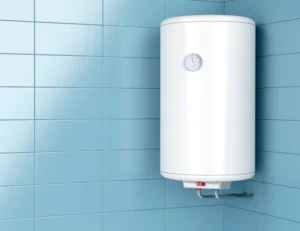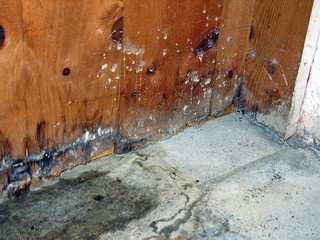Water Heater Basics
Denver Water Heater Repair is one of the most important appliances in your home. This big metal cylinder is usually tucked away in a basement or utility room, but it’s vital to your everyday comfort.
Tank-style units are powered by electricity, natural gas, propane, fuel oil, or some combination of these energy sources. A gauge records the water temperature inside the insulated tank, and the heating mechanism kicks in whenever the reading drops below the pre-set level.

Water heaters are one of the most common and familiar appliances in homes. They accomplish a very simple task by heating the cold water coming into the home to hot water for showers, washing machines, and other household uses. But with the many options on the market today, finding the best water heater can be challenging.
The standard tank-style water heater is a large metal cylinder that sits in your utility room, heats, and stores a set amount of hot water for later use. It operates on either natural gas, propane, oil, or electricity. When the tank runs out of hot water, the heating element will turn on again to reheat the water to keep a steady supply ready.
These tanks come in a range of sizes from 30-50 gallons, depending on your household size and how much hot water you need at any given time. Electric tank models are the least expensive to purchase and install but cost more than others. Gas tank models are more costly to purchase and install, but they typically provide a lower cost per unit of energy.
Another popular option is the hybrid water heater system. These units have a large insulated tank and a heat pump mounted on top of the tank. This combination makes the appliance more affordable, but it takes up more space than a traditional tank water heater and is only available as a large model.
The tankless water heater has become more popular recently because of its small size and energy savings. These appliances are installed inside your walls where they cannot be seen, and the pipes that deliver water to your home pass right through them. They heat the water as it passes through, so they do not use energy when you are not using hot water. The only drawback is that they take longer to heat the water than a conventional tank-style water heater, and they can need help to meet the hot water demands of larger households.
Tankless, also called on-demand, water heaters heat water only when needed, saving energy by eliminating the standby losses associated with heating and maintaining a large hot water tank. They work on electricity or gas, using a heat exchanger to bring the water to temperature rapidly and then delivering it through the pipes at the desired flow rate.
These units typically last 20 years or more, compared to 10 for tank storage models. They also take up less space in the home, as they need a larger tank.
Whenever the hot-water tap is turned on, a sensor detects water flowing through the heater and turns on a burner or heat exchanger. When it is off, the unit switches to a standby mode and keeps the water flow at a minimum rate (about 11 gallons per minute for an electric tankless model like the Tempra 29 by Stiebel Eltron).
Several tankless units may be installed parallel to meet your overall hot-water demands if you have a larger household. You can use these units in conjunction with existing tank-type water heaters, as well as to serve extra fixtures such as showerheads and sink faucets — though you’ll need to upgrade your older showerheads and faucets to low-flow versions that limit water flow to about 2.2 gallons per minute.
Both electrical and gas tankless heaters are available for whole-house or point-of-use installation. The higher capacity whole-house models are more expensive than the point-of-use versions, and you’ll need to hire a plumber or electrician to install them, as they have different power, gas supply, venting, and plumbing requirements.
Electric units require a dedicated circuit; the installer may need to upgrade your home’s electrical service to 200 amps or more, depending on how many units you choose and where in the house you plan to install them. You’ll also need to upgrade your natural gas supply and install a gas line, costing up to $3,000. Point-of-use models are cheaper than whole-house models but have a high initial investment.
Most things get bigger when they heat up and smaller when they cool down (water is a notable exception). A thermostat uses this property to turn an electric circuit on and off. It’s most often used to control heating systems but can also be used for water heaters. The most common mechanical thermostat has two pieces of metal bolted together to form a strip that connects to your heating system as a bridge in an electrical circuit. The electricity passes through the strip, and when the room temperature rises, one of the metals expands more than the other. This causes the “bridge” to bend, and the electricity switches off. The other metal then drops, and the circuit opens. A spring pulls the whole thing back into place.
A more modern electronic version of this design uses a sensor to monitor the temperature, and a microprocessor converts the varying resistance into an electrical signal that tells the circuit to switch on or off. The digital version is also more flexible than the mercury switch thermostat, as it can be programmed for multiple settings.
Other types of thermostats use a more traditional approach to temperature sensing. A wax thermometer is a good example: As the air warms, it melts a small amount of wax inside the sealed chamber that houses a needle (blue). As the needle moves up through the liquid, the wax expands and pushes it against a piece of metal in the center of the thermostat. The movement triggers a mechanism that shuts off the flow of hot water to the radiator until the needle returns to normal.
Regardless of the kind of thermostat you choose, it’s important to place it correctly to optimize its operation. It needs to be away from direct sunlight and drafts and in a place where it will be exposed to natural room air currents-warm air rising, cold air sinking-without any obstructions from furniture or curtains. It’s best to mount it on an interior wall, preferably near the floor.
Water heaters are often out of sight and out of mind, but when they stop working, it’s hard to forget that their failure will majorly impact household life. For example, hot showers may be out of the question, dishes will pile up, and laundry will be less effective at removing stains.
While water heaters are less complicated than other home appliances, they still need regular maintenance to keep them functioning properly. Flushing a gas or electric water heater every six months is essential. It will help eliminate rust, sediment, and sludge that can damage the tank or pipes. Draining and cleaning the tank once or twice a year is also a good idea. It is important to ensure the power is turned off before flushing or cleaning a water heater.
Another critical part of water heater maintenance is regularly checking the pressure-reducing and temperature-release valves. These valves are designed to release excess pressure from the tank and prevent explosions. They can be easily overlooked when performing water heater maintenance, but if they break, it could lead to expensive damage to your home.
In addition, it’s a good idea to check the vapor relief valve periodically. This valve is designed to vent the excess gases from the tank, and if it fails, it could cause a dangerous leak that can be very difficult to find.
The anode rod and the water heater temperature should also be checked annually. The anode rod attracts the rust and sediment from the water, so it doesn’t corrode the water heater. The temperature should be around 120 degrees Fahrenheit to reduce the risk of scalding accidents.
In addition, keeping a sturdy, heat-resistant drain pan underneath the tank in indoor environments is a good practice. This will protect the floor and any nearby individuals from the effects of a catastrophic flood caused by a water heater rupture or pressure valve runoff. It’s also a good idea to periodically inspect the area around the water heater for flammable materials such as paper, cleaning rags, paint, and gasoline.

